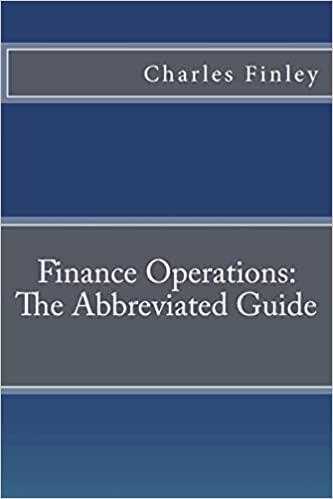Answered step by step
Verified Expert Solution
Question
1 Approved Answer
just 8 and 9 please 3 is included in order to solve 8 used in the valuation analysis: (1) S=[EBITkd (D)] (1T)/ks (2) V=S+D (3)
just 8 and 9 please
used in the valuation analysis: (1) S=[EBITkd (D)] (1T)/ks (2) V=S+D (3) P=(VD0)0 (4) n1=n0D/P (5) VL=VU+TD (Modigliani-Miller) (6) VL=VU+[1(1Te)(1Ti)/(1Td)]D (Mitler) Here, S=marketvalueofequityD=valueofdebt RBIT = earnings before interest and taxes kd=costofdebt D= market (and book) value of new debt D0= market value of old debt T= tax rate Tc= corporate tax rate Ts= tax rate on income from stock Td= tax rate on income from debt ks=cost of equity V= total market value P= stock price after recapitalization n0= number of shares before recapitalization n1= number of shares after recapitalization a. Explain the logic of Equation (1) for a zero-growth firm. b. Describe briefly, without using numbers, the sequence of events that would occur if Aspeon decided to recapitalize. 8. Now consider two capital struciure theories: Modigliani-Miller with corporate taxes (MM63) and the Miller model. a. What would Aspeon's value at $75.0 million of debt be, according to the MM63 model? b. What would the firm's value be, according to the Miller model? (Assume that the personal tax rate on income from stock [Ts] is 25 percent, and the personal tax rate on income from debt [Td] is 30 percent. Also, use $120 million as the value of the unlevered firm [VU] in both the MM63 and Miller models, even though it should be less in the Miller model.) c. Why do the values differ when calculated by the equations in Question 3, the MM63 model, and the Miller model? (Hint: Consider the assumptions that underlie each model.) 9. How do control issues affect the capital structure decision? 10. Consider the usefulness of this analysis for most firms. a. What are the major weaknesses of the type of analysis called for in the case? b. What other approaches could managers use to help determine an appropriate target capital structure? c. Is the target capital structure best thought of as a point estimate or as a range? d. What other factors should managers consider when setting their firms' target capital structures? used in the valuation analysis: (1) S=[EBITkd (D)] (1T)/ks (2) V=S+D (3) P=(VD0)0 (4) n1=n0D/P (5) VL=VU+TD (Modigliani-Miller) (6) VL=VU+[1(1Te)(1Ti)/(1Td)]D (Mitler) Here, S=marketvalueofequityD=valueofdebt RBIT = earnings before interest and taxes kd=costofdebt D= market (and book) value of new debt D0= market value of old debt T= tax rate Tc= corporate tax rate Ts= tax rate on income from stock Td= tax rate on income from debt ks=cost of equity V= total market value P= stock price after recapitalization n0= number of shares before recapitalization n1= number of shares after recapitalization a. Explain the logic of Equation (1) for a zero-growth firm. b. Describe briefly, without using numbers, the sequence of events that would occur if Aspeon decided to recapitalize. 8. Now consider two capital struciure theories: Modigliani-Miller with corporate taxes (MM63) and the Miller model. a. What would Aspeon's value at $75.0 million of debt be, according to the MM63 model? b. What would the firm's value be, according to the Miller model? (Assume that the personal tax rate on income from stock [Ts] is 25 percent, and the personal tax rate on income from debt [Td] is 30 percent. Also, use $120 million as the value of the unlevered firm [VU] in both the MM63 and Miller models, even though it should be less in the Miller model.) c. Why do the values differ when calculated by the equations in Question 3, the MM63 model, and the Miller model? (Hint: Consider the assumptions that underlie each model.) 9. How do control issues affect the capital structure decision? 10. Consider the usefulness of this analysis for most firms. a. What are the major weaknesses of the type of analysis called for in the case? b. What other approaches could managers use to help determine an appropriate target capital structure? c. Is the target capital structure best thought of as a point estimate or as a range? d. What other factors should managers consider when setting their firms' target capital structures 3 is included in order to solve 8 





Step by Step Solution
There are 3 Steps involved in it
Step: 1

Get Instant Access to Expert-Tailored Solutions
See step-by-step solutions with expert insights and AI powered tools for academic success
Step: 2

Step: 3

Ace Your Homework with AI
Get the answers you need in no time with our AI-driven, step-by-step assistance
Get Started


